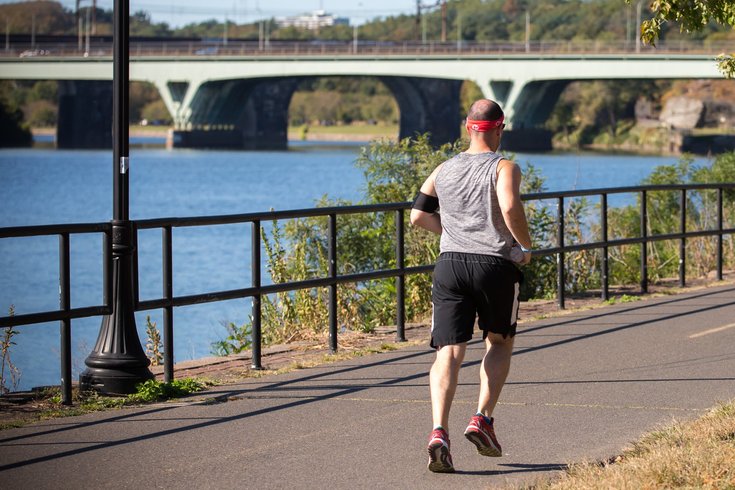
June 19, 2024
 Thom Carroll/For PhillyVoice
Thom Carroll/For PhillyVoice
Exercising outside during a heat wave poses health risks. Hydration and other precautions are necessary to avoid heat-related illnesses like heat stroke and heat exhaustion, a Philadelphia physical therapist says.
Exercising in extremely hot weather can lead to heat-related conditions ranging from minor issues like cramps to serious illnesses like heat stroke.
But following certain guidelines and having a plan can help ensure safety and improve athletic performance, said Nick Petroski, who owns a physical therapy clinic in Philadelphia that serves a broad range of athletes, from professional baseball and football players to runners and the general population.
Working out in extreme heat can lead to heat cramps that feel like muscle pain or spasms. These symptoms can progress to heat exhaustion, characterized by heavy sweating, nausea, vomiting, muscle cramps, dizziness or fainting. Heat stroke occurs when the body temperature reaches 103 degrees or higher and is often accompanied by a fast, strong pulse, confusion and loss of consciousness, among other symptoms.
Petroski and his team of clinicians and coaches at Petroski Physio offer the following advice for exercising in extreme heat:
If you know it's going to be hot, start gradually exposing yourself to the heat while you exercise over a one- to two-week period. Even a couple of days of heat acclimation before extended exertion outdoors – such as playing a baseball game or running a race – helps the body better adapt to the heat and avoid heat-related illness, Petroski said.
"Don't over complicate this," Petroski said. "If you are any bit thirsty, then you need to grab a drink."
A more precise way of determining how much water to drink each day is to divide your weight in half and drink at least one ounce per pound. For example, someone who weights 160 pounds should drink 80 ounces of water a day – and more if exercising in extreme heat, Petroski said.
It's also important to start hydrating several hours before you head out, he added.
Increased sweat causes an increased loss of sodium and other electrolytes, so restoring those with powdered electrolytes mixes, such as LMNT Zero-Sugar Electrolytes, dissolved in water is necessary in hot weather. Gatorade or other sports drinks that may contain a lot of sugar aren't necessary for most athletes.
"If you're Michael Phelps, or if you're someone that is highly competitive and burning a ton of calories, then that may be beneficial to how you get your carbohydrates in," Petroski said. "But for most general athletes, you might not need all the sugars."
Refueling with healthy protein and carbohydrates is important, too, Petroski said.
After exercising in extreme heat, go somewhere air-conditioned, take a cold shower or even do a full-body immersion in icy water.
"It doesn't really matter how you go about it," Petroski said. Just make sure you find a way to lower your body temperature.
Sometimes, athletes improve their performances in the heat. But that does not mean their bodies are immune to heat-related illness, Petroski said. People who exercise in extreme heat need to follow these guidelines and especially focus on hydration, Petroski said.
The U.S. Centers for Disease Control and Prevention offers more tips and resources for how to stay safe while exercising in extreme heat.